What can damage my Leather Sofa?
Posted by JW on 13th Feb 2023
Leather Furniture is classic and stylish for any home, but it can be delicate depending on the leather you purchased.
While leather is probably the most durable material and will last for many years if cared for properly.
However, there are certain things that can damage a leather sofa and shorten its lifespan.
In this article, we will discuss some of the most common culprits that can harm your leather sofa and how to prevent them.

1. Sunlight:
Leather can be sensitive to prolonged exposure to direct sunlight, which can cause it to fade or even crack. Avoid placing your leather sofa in direct sunlight or using harsh chemicals to clean it, as these can also damage the material. If your leather is pigmented or aniline plus you will have extra protection that an aniline may not have.

2. Heat:
Similarly, high temperatures can damage leather, causing it to dry out and crack. Keep your leather sofa away from heat sources like radiators or fireplaces, and don't use a hair dryer to dry out any spills or stains.
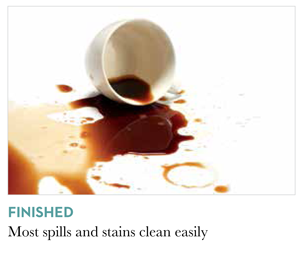
3. Liquids:
Protected leather is impervious to water/oil based liquids . Water, soft drinks, wines, alcohol, these can possibly do harm especially if the Leather is not protected. Natural leather is not waterproof and can be damaged by exposure to liquids that sit over time. If you have a natural leather , clean up any spills immediately to prevent them from soaking into the material.
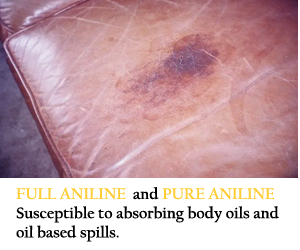
4. Body Oils:
Body oils, perspiration, hair products, medicines, lotions are some things that can degrade the Leather finish. Take special care in cleaning these areas periodically, especially if you have a finished leather as the top coat can degrade over time resulting in color transfer and cracking of the leather. Below and to the right are areas where head oils and oil based spills absorbed or removed the top coat and dye coat of the leather.


5. Pets:
While leather can be a durable material, it is vulnerable to scratches from pets' claws. Cat claws can knick the leather or surface scratch it pore depth.
Protected leathers are easy to clean and maintain with pets and do not absorb odors (except urine) and pet hair wipes off easily.
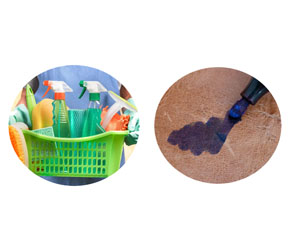
6. Harsh chemicals:
Avoid using harsh cleaning products on your leather sofa, as these can damage the material and cause it to deteriorate over time. Stick to gentle cleaning solutions specifically designed for use on leather. Be conscious of blue jeans and other materials that are not dye fast.
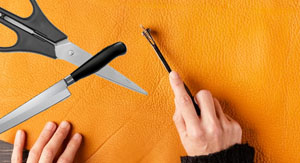
7. Sharp objects:
While it is difficult to tear completely through leather, always be careful not to place sharp or abrasive objects on your leather sofa, as these can scratch or damage the finish .
Avoid placing anything with metal edges or zippers on the surface of your sofa. Scratches can be touched up by a professional if this happens, best to reach out to where you purchased it for more advice.
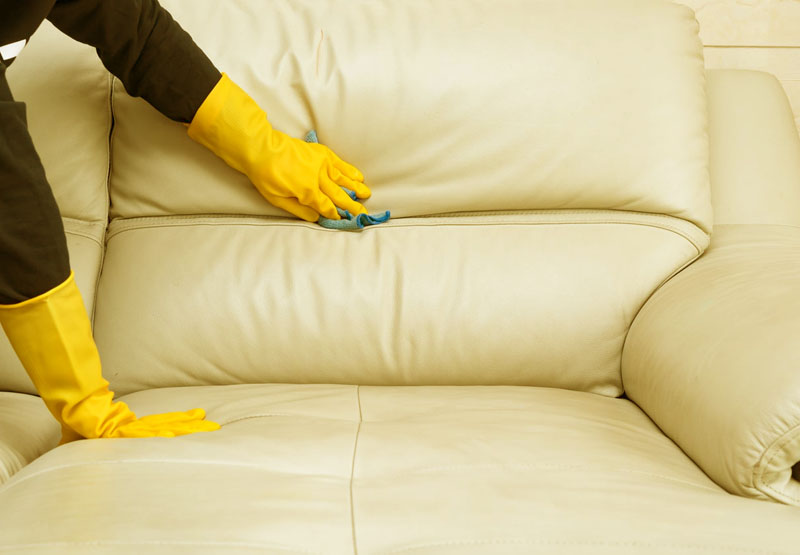
Summary
Never use any household cleaners, like glass cleaner, bleach, ammonia, furniture polish . These will dry out your
leather and remove any top coats that are protecting it. Absorb excess butter, oil, grease with a clean dry cloth.
Do NOT apply water to an oil based stain.
Do NOT use Saddle soaps, cleaning solvents, detergents
Do dust regularly
Only use soft water based cleaners that are approved by the leather tanneries. Avoid excess rubbing . Always clean areas where head , body, skin comes in contact to aniline plus or pigmented leathers. Failing to do this will cause the top coat to break down and open the finish to crazing or transfer.
Get educated on different Signs of leather, a must read before you make that purchase and a Buying Guide
to help you become an expert in leather.
Different types of leather
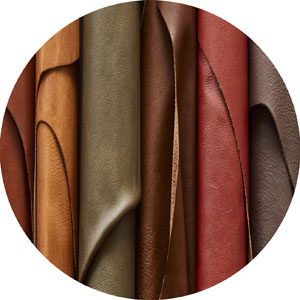
Each type of leather requires a different method to clean, here is a quick identifier to get you pointed in the right direction.
If you are still not sure what to use, the safest way to approach leather cleaning is using a damp white cloth and 1-2 drops of very mild soap solution for pigment or aniline plus leathers.
On pure or full anilines (except nubuck) Neutrogena @ soap and distilled water is the best .













